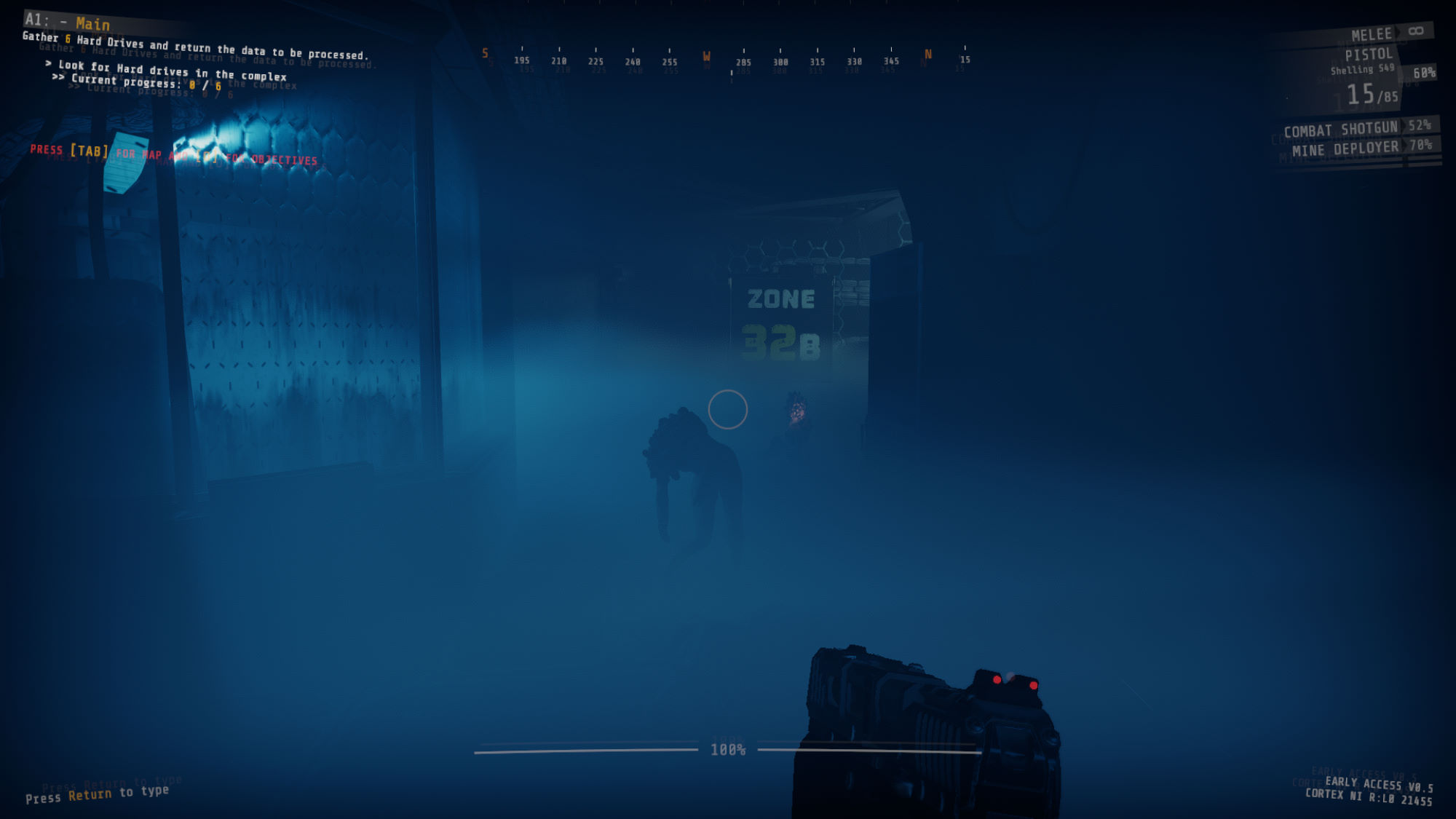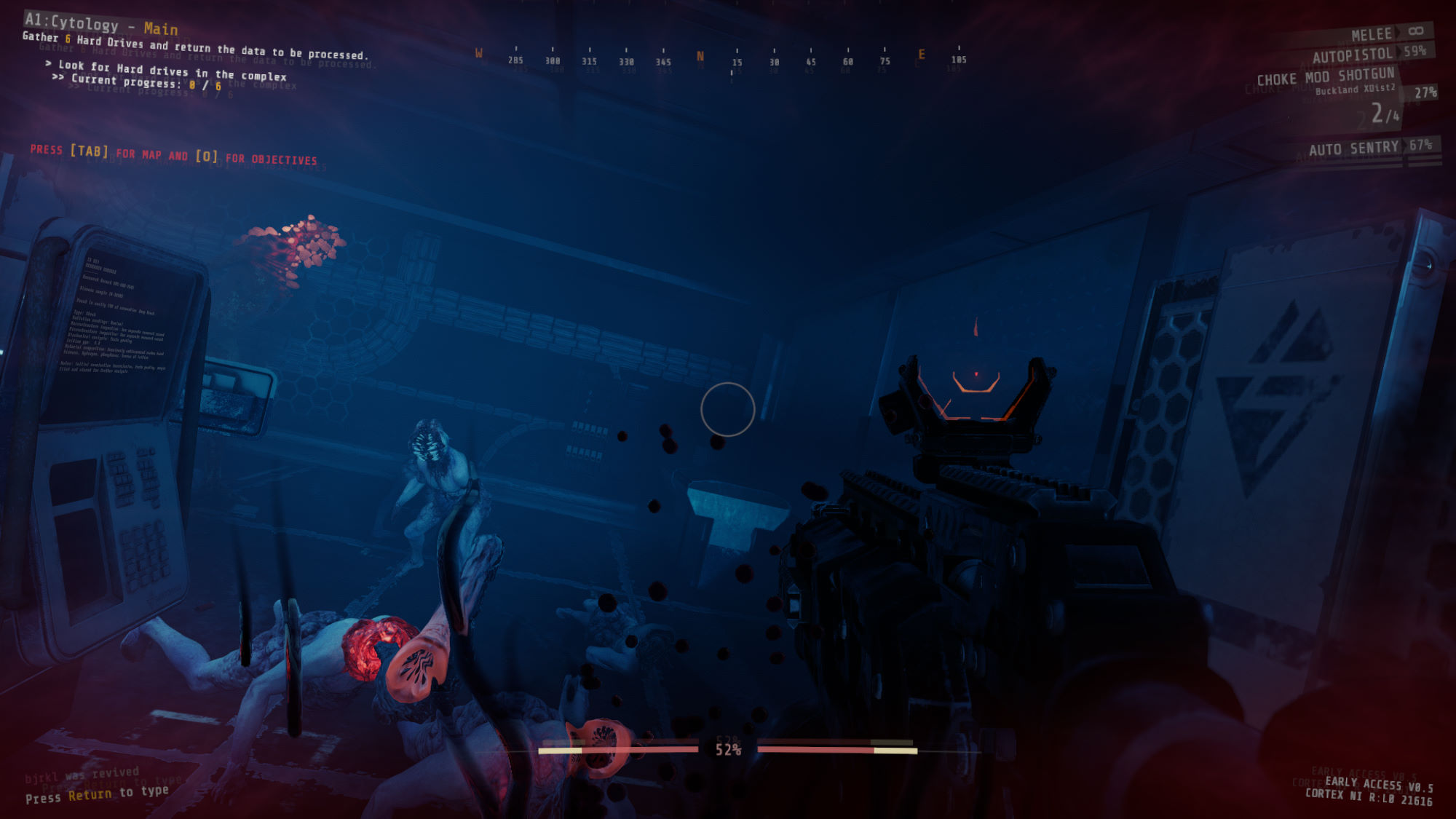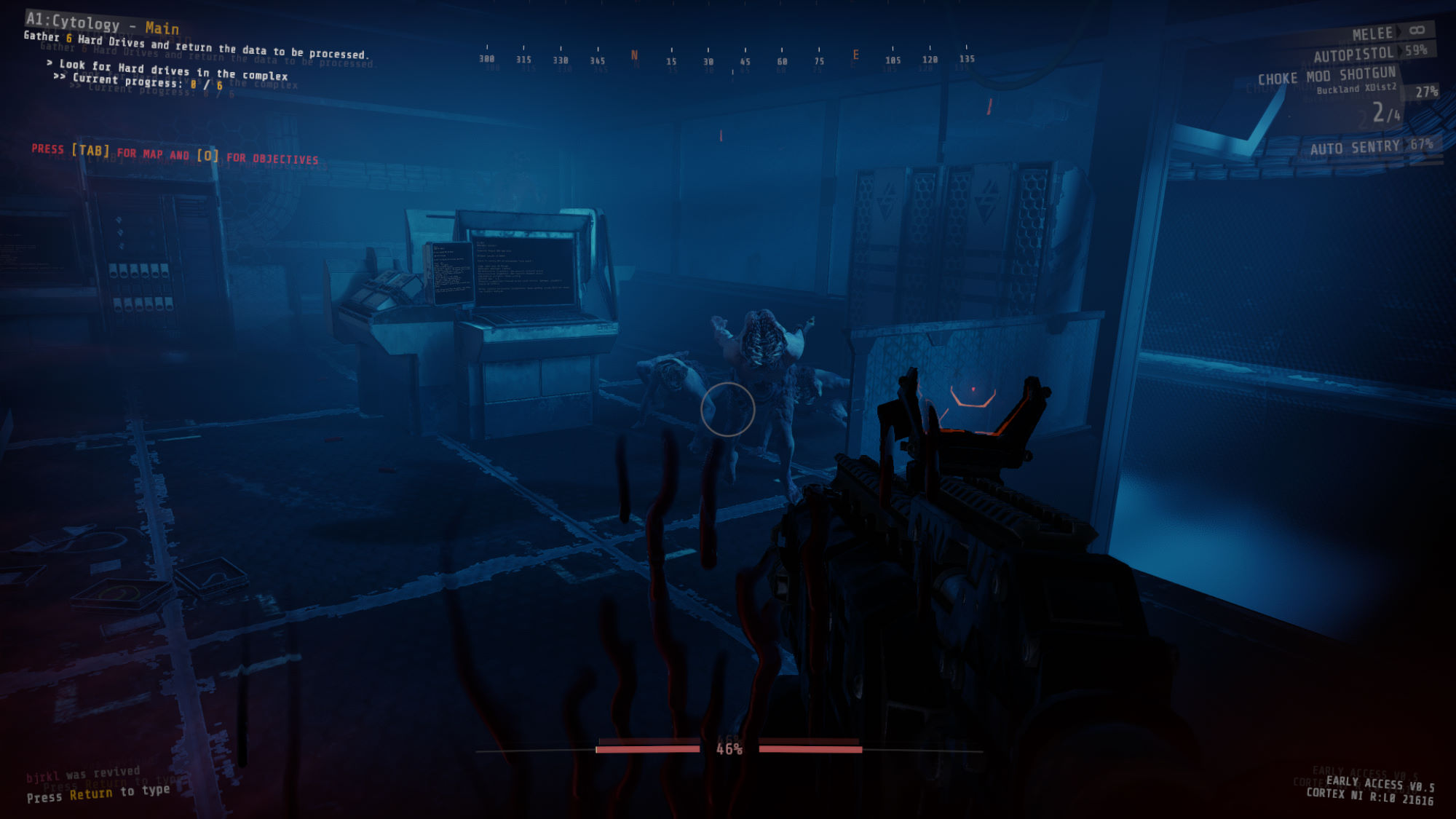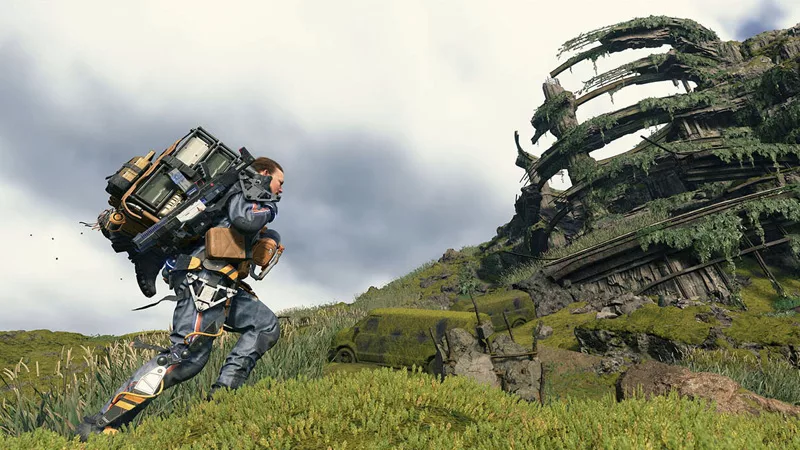Scarcity leads to brilliance in the smash hit action-horror game GTFO
The scares start as soon as you hit play. Darkness creeps around the edges of everything, filling you with unease before you’ve even plunged into the labyrinth. Unsettling noises hiss and rattle in your ears, hinting at something lurking just out of view. And that’s before a monster ever enters your crosshairs.

GTFO is not for the faint of heart. Created by the ambitious nine-person team of indie game studio 10 Chambers, this action-horror FPS has become a fan favorite for its hardcore tactical gameplay. Developed from the ground up as a four-player co-op experience, every trip into its depths demands careful teamwork to strategically use limited resources. Every decision, from creating your loadout to deciding how you use your last bullet, can make the difference between another breath and certain death.
Team ROG hopped in-game with GTFO developers Simon Viklund and Robin Björkell to get an inside look at the smash hit.
Difficulty by design
“Stop! Stay where you are! It can see us when it glows...” warns Viklund, sledgehammer raised high to bash into a hulking monster’s orb-like, glowing head.
The advice comes too late, by a hair. The beast’s stuttering breaths turn into a full roar, and it’s only the hair-trigger reflexes of our veteran guides that keep us ready for the next fight.
In GTFO, every four-person team is dropped into the Complex to carry out tasks for an unknown entity called The Warden. These campaigns, known as Rundowns, are separated into challenging Expeditions that are always changing to keep even experienced players on their toes.
If that wasn’t enough, resource scarcity turns nearly every aspect of the game into a puzzle. Ammo is limited. So is health. Tools must be carefully selected. Even light must be employed strategically. “You have to learn and unlearn some stuff for GTFO,” says Viklund. “Killing enemies in GTFO gives you absolutely nothing. You have to spend your resources to kill the monsters. You don't get XP or anything.”
This design ensures that every fight is a calculation. Players have to analyze their team’s entire situation before diving into new encounters. How much collective ammo do you have? How much damage could you tank? Where can you set up a turret or put down foam to slow down an encroaching horde?
“To get the upper hand in a fight, it can be a good idea to kill the first few enemies with melee weapons before the entire room wakes up and you're overwhelmed,” says Viklund. “Then, you switch to firearms, just to save the few bullets that you can.”
Mission cues that are common to many modern games, such as waypoints and quest logs, are also bypassed in favor of environmental clues that require old-fashioned teamwork to crack.
“What's great about that is that it inspires conversation within the team,” explains Viklund. “[In many games], as soon as everyone gets a waypoint, they just want to run towards it. There's no need to communicate. When things are just a little bit unclear, and you need to move as a team, then it becomes much more of a conversation. Do we go left or do we go, right? How do we find our objective? There's very little hand holding, and that’s all very much by design.”
Even movement and exploration need to be approached with caution. Taking a detour down a new area in search of supplies, or even opening supply boxes (all rigged with screeching alarms that must be hacked via a mini-game), can end up costing your life.

“That becomes what's interesting about every expedition. That experience is like nothing else,” says Viklund. “Sometimes things go well, but even if you lose a lot of health and ammo in the very first room, you can always bounce back. For myself, I find that it's actually good to run into trouble every once in a while—maybe even early on, because it galvanizes the team. Otherwise, if things are too easy, it's easy to start playing sloppy. You need a slap on the wrist.”
This is the rare FPS that casts you as prey rather than a raging gun god. Your team and your ingenuity are the only things you can truly depend on. No more diving headlong into a battle, mashing the jump key as you face a horde of enemies. You can’t memorize the meta-game through sheer repetition because encounters change with every run.
The number, positions, and types of enemies are randomized with every playthrough. Regardless of how many times you’ve suited up for the Warden, you’ll never truly know what lies around any corner. That part of the design is essential for replay value and to keep things fresh for veterans.
“[Every GTFO run] becomes this one-off war story that you share with your buddies. That's the idea behind a lot of the vision behind the game. Having these random elements creates those situations often enough to keep every time you play interesting.”
Scarcity inspires brilliance
Creating tension through limited resources is a staple of the survival-horror genre, and GTFO is no exception. When resources are limited in-game, challenges stack exponentially. Everything becomes a question of cost. It takes careful strategy to succeed, a theme that extends even to GTFO’s creation.
The more you play GTFO, the more shocking it becomes that it was created by a self-funded group of just nine veteran game developers. In order to create a game this ambitious, 10 Chambers had to think purposefully about everything they made, from sound design to story to game systems and beyond.

Cutscenes and other cinematics are enormously costly, so the story of GTFO is told largely through environmental art, ambiance, and text hidden throughout the world. “We tried to keep the longform storytelling to a minimum. If it's interesting to you, you can find clues and logs, and you can read about it, but it’s never in your way.”
For audio and sound effects, the devs even hopped into the recording studio to give voice to the fleshy, grotesque monsters that roam the deep.
“For the monsters, we decided that they had to sound organic, so we all recorded our own voices and manipulated them in different, interesting ways,” says Viklund. “This clicking sound that they make when they're glowing—that's actually one sound of the director making a low croaking in his throat, which I then spaced in unnatural-sounding little pulses, in a way that the human voice cannot actually do.”
Sometimes, if you want a monster to sound delightfully wrong, you’ve just got to do it yourself.
Takeaways from the deep
By scoping their game thoughtfully and maximizing every resource at their disposal, 10 Chambers managed to make one of the most ambitious horror FPS games out there. For a game that takes place in such a terrifying setting, the key to success in GTFO is beautifully simple: teamwork is everything. No one can escape the darkness (or create a game) without it.
To watch the ROG team take on GTFO ourselves, check out the February 26, 2021 episode of ROG Live on our Twitch channel, starting at noon PT. If you don't catch the show live, you can check out the video-on-demand version to see how we fared. And if you want to take your own chances against the challenges of GTFO, pick it up for yourself and team up with friends to think and fight your way through its ever-shifting environments.


